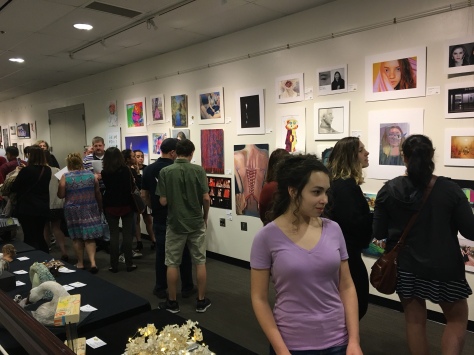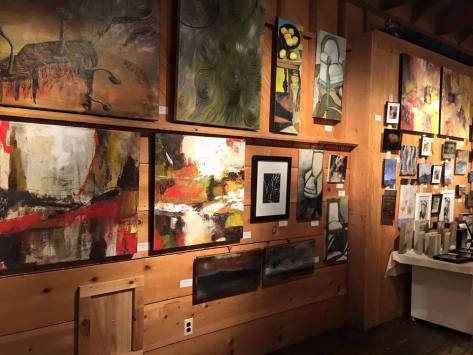I have spent some time this school year looking at engaging activities and how they impact instruction. I especially enjoyed an opportunity we had to share and play with a number of such activities with a cohort of new art teachers to our district. Most recently, though, I learned of a clever idea that was used to engage a different audience, families!
Tag Archives: exhibition
It’s amazing what you can do with the help of an art teacher.
“It’s amazing what you can do with the help of an art teacher” is an overly-long title in my opinion, but I was considering, “It’s amazing what you can do with the help of an art teacher, and other quotes from our superintendent.”

Tonight we held our Regional Scholastic Art Awards ceremony, and we were honored to have Dr. Scott Brabrand, Superintendent of Fairfax County Public Schools, join us to offer some opening remarks and his congratulations to our student award winners. And yes, he actually said, “It’s amazing what you can do with the help of an art teacher.”

He was sharing a personal experience and experiment. He wanted to see if he could learn to draw at the age of 49, and just one hour with an art teacher allowed him to make significant strides.

Dr. Brabrand went out of his way to recognize the art teachers at tonight’s event. He also acknowledged how important the arts are in our schools and recognized that the arts are supporting the very skills the school system is striving to instill in all graduates including communication skills, creativity, and critical thinking.

I couldn’t be more proud to have a superintendent and leadership team who are so supportive of the arts. Thank you, Dr. Brabrand, not just for saying it, but for showing it by making time to join us for this special night!
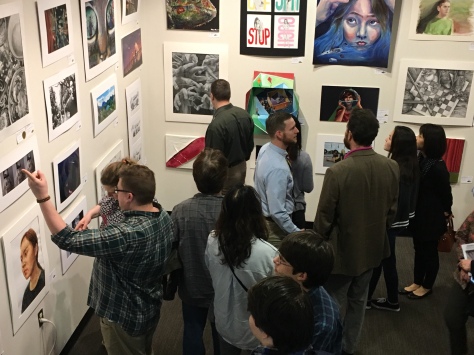
Scholastic Art
Such a busy time of year! But I want to take a moment to acknowledge a big milestone in the Scholastic Art Awards season: the exhibition is installed!
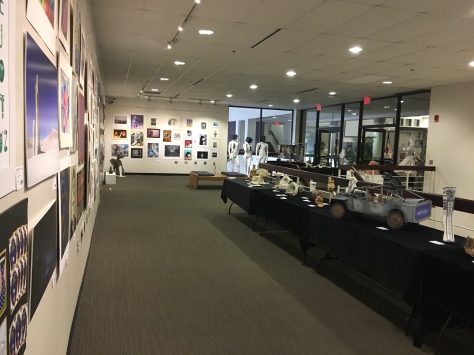
We judges more work than ever, and have more work than ever to install in a gallery space that has remained stubbornly unchanged in size from year to year.

We also had our fair share of weather challenges including at submission deadline time, and for installing this show. A HUGE thank you to the teachers who came in on their snow day to get this work going.

Nearly 400 gold key and silver key artworks are on display at the Ernst Center at the Annandale Campus of Northern Virginia Community College.

There is still much to be done to prepare for our award ceremony on February 21. Stay tuned for more!
Display Durability
There’s a little frustration that I deal with every year when we hang the regional Scholastic Art Exhibition — mats that fall apart! How do you like this lovely artwork? Very avant garde, right?!

I will concede that most matting applications do not require the durability that this show does. Most mats just need to hold together well enough to be placed into a frame which then holds everything together. Not so here! We hang the whole show without frames, and the work is suspended from its backing.
Inevitably, a few mats and artworks fall off the wall and backing leaving behind something like the picture above in their spot on the wall. I’m happy to make repairs, but the artwork and mat are often damaged in ways I cannot fix.
If you have a similar show set up, ever, here are a few tips.
- Don’t use masking tape. At all. For any of it.
- And that definitely means no painters tape.
- No scotch tape.
- No double sided scotch tape. That doesn’t work either.
- Don’t connect the backing with tape loops. Doubling or tripling the number of tape loops does not make this work better.
I realize this is one of those “DO NOT” lists, but the ones that fall apart are the ones that inform my list. Maybe I should see how the really good ones are put together. I think there’s a little irony in there.
Scholastic Season
It’s a busy but very exiting time of year – Scholastic Art Awards season!
In our small art region we assembled a fantastic group of professional artists and art educators to judge 2600 entries. You can read more HERE. Congratulations to all of the student award winners. I can’t wait to see the artwork displayed in our annual exhibition.
A Show with Punch
And I don’t mean cookies and punch! I want to give props to the Westfield Pyramid for the excellent art event they put together this week. This is certainly not the only group that puts together an outstanding show, but I want to share some of the things they do to make it so. Let’s count ’em down.
Exhibition Installation
We had a couple of very busy days last week hanging the exhibition of Regional Gold and Silver Key award winners.

On the first day, eight amazing art teachers helped a few of us from the fine arts office to get all of the two-dimensional work hung on the walls.

And on the second day, the work on the walls was adjusted and finalized while all of the three-dimensional work was installed in display cases.
Thanks to all the wonderful helpers! The show looks great!
Artist Teacher Exhibition
The 2015 Artist Teacher Exhibition is installed, and I’m looking forward to the opening reception on Saturday evening.

Everyone is welcome, so come on out and celebrate the creative endeavors of our fine arts teachers.

Thanks to Jayne (photo above) and Elaine (photo below) for taking these shots after install.
I could do that
It’s so cliche, and yet you can still hear it said in galleries and museums. I know, because I heard it myself. “I could do that.”
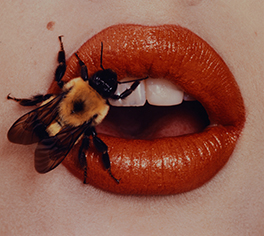
More frustrating this time, is that it was couched as a response to a good question. One person asked, “What does [the artwork] make you think?” And what was the response?!
“Makes me think I could do that with Instagram filters.”
Really?!
I was at the National Portrait Gallery and Smithsonian American Art Museum on opening day of the Irving Penn: Beyond Beauty exhibition. I was standing in the middle of this impressive collection of photographs representing the career of a prolific photographer, and I get Instagram filters!
Clearly the ubiquity of photography played a role in this case, and abstract expressionist painting (among many other art genres) gets its fair share of this treatment. But why? Why do people say this? And why in relation to art?
Think about this in comparison:
A young driver approaches an intersection with her friend in the passenger seat. They see a police officer standing in the middle of the intersection directing traffic. The officer directs some lanes to stop and waves the cross-traffic on. The driver turns to her friend and rolls her eyes, “Well, I could do that!”
Can you even imagine this happening? Let’s imagine it a little more like a retrospective art exhibit if you like. How about this!? (I’ll do my best not to offend someone.)
The same police officer from our story above dies, and as will happen in the tight-knit law enforcement community, a memorial event is held. The officers many good deeds and acts of service to his community are featured on display boards on easels at a reception. A pair of community members walk through and read all the posters. One turns to the other and says, “I don’t see what the big deal is, I could do that.”
I hope you agree that these examples are ridiculous. The work of most professionals is not treated with the disrespect of “I could do that.” There are a couple of standard explanations for why people respond to art this way.
One of the most commonly accepted is a lack of understanding. That the person who views an artwork and declares, “I could do that” just doesn’t have an appreciation for art, an understanding of how that particular artwork was made, or of the significance of the work or style in the context of art history and culture.
This explanation certainly contributes, but I don’t think it is enough by itself to explain why it doesn’t happen in response to other professions. My understanding of the day-to-day turmoils of a police officer (and most other professions, for that matter) are no better informed than his understanding of the work of an artist.
Another possible explanation is that great art makes it look easy. Nope. I take the same issue with this one. Most skilled professionals, including the police officer, can make complex work look easier than it is.
Perhaps we can begin to understand this behavior if we identify another situation for comparison where it does happen. The only other profession I can think of that suffers a similar treatment is professional athletes. Especially when things aren’t going so well for a team, you might hear a passionate sports fan declare something like, “they suck, I could do better!”
I think this comparison might be informative. Like an artist, the athlete is a highly trained professional committed to the highest level of performance in their field. (Of course I can’t think of whole leagues of artists who get multi million dollar contracts, but let’s go with it.) I suspect our answer is in the similarity between artists and professional athletes. In fact, as I think about it, I believe we are going find it in this statement:
Our culture puts professional athletes on a pedestal.
Would you look at that — ON A PEDESTAL! The very language we use makes the connection. An artwork is literally displayed on a pedestal, and we’ve all seen an Olympic medal ceremony where the athletes are on raised podiums, quite literally on a pedestal. I’m not even certain if the origins of this phrase are artistic or athletic, but the implied honor and reverence toward that which we put on a pedestal may explain why we might say, “I could do that.”
We hold these things (art and sport) to such high standard, and the people to a super-human standard, it would seem. When they don’t meet our expectations as viewers and fans, we insult and belittle them, dealing them the most heinous of insults — that they are not, in fact, super-human, but so much like a regular mortal, that any other mortal could do their job just as well. Even me!
Well, it may not be right, but it’s a theory.
If you get a chance, go check out Irving Penn: Beyond Beauty at the American Art Museum. And try not to say, “I could do that.”
Recent Works
It was a pleasure to see the Recent Works Show and Benefit last night featuring work by a number of my colleagues including Elaine Florimonte, Kim Basinger, Debbie Glakas, Krister Killinger, Jayne Matricardi-Burke, Kate Patsch and Angelika Schafer.
This is an excellent collection of work offering guests a range of ways, from original works to prints and inexpensive note cards, to support the American Cancer Society.
The great news it it’s not too late! The event is open today. Get more information HERE.
Great job to all involved!
